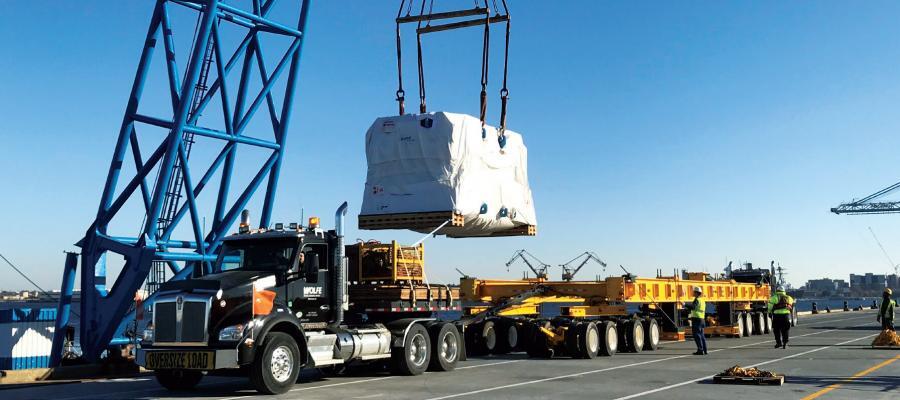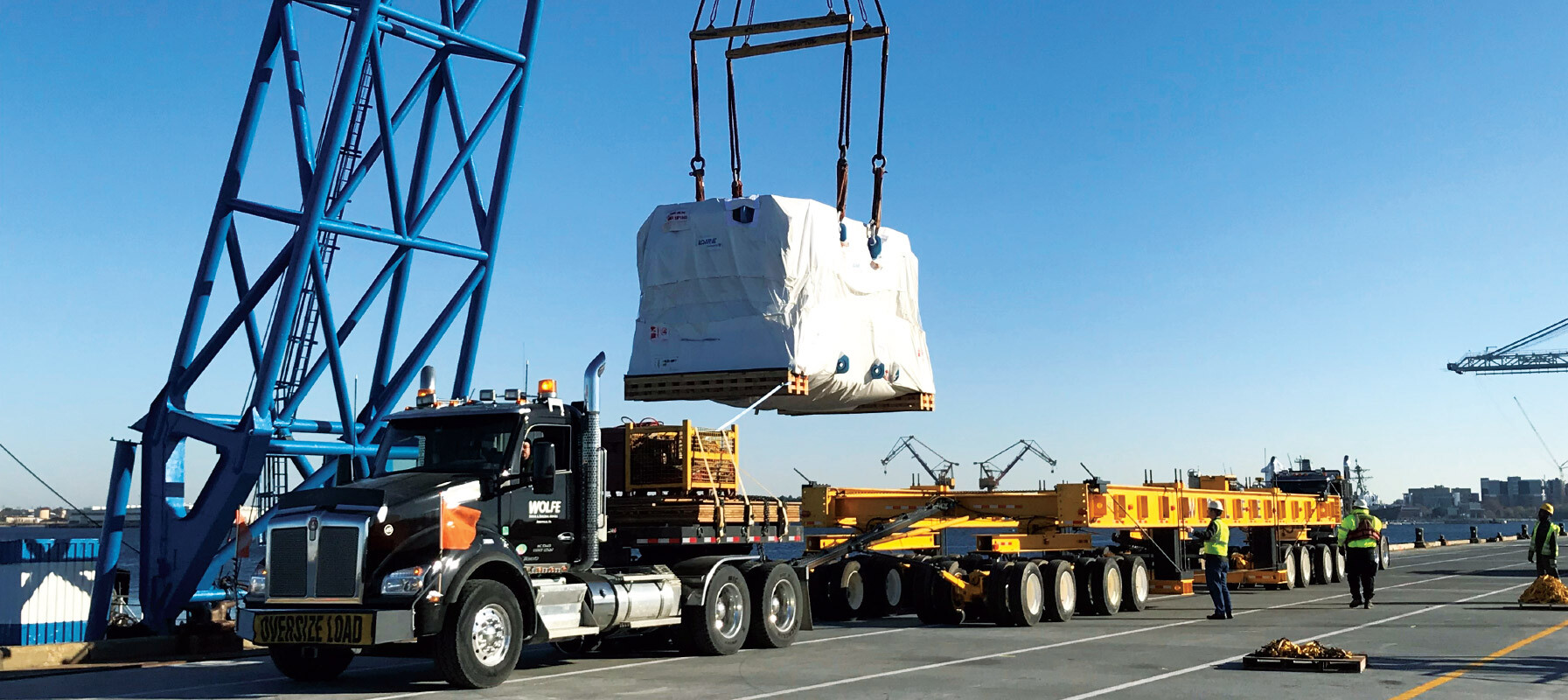Interview with
Mr. Jim Shapiro
Owner

First of all, Jim can you explain to our readers about the choice of company name? Why did you choose the name Thunderbolt? When was the company started, and is it owned by you?
We use January 16, 2008 as our starting date as this was the date when we received our Ocean Transportation Intermediary (OTI) license from the Federal Maritime Commission. There were three of us at the time, and we shared space with another freight forwarder who were friends of mine and they gave us free rent. Without them, it would have been harder to get the company going. It was several months before the financial crisis in late 2008. Thankfully, the crisis really didn’t impact us very much.
The company was started with my childhood friend Stu Tobin. We both grew up just outside of Boston. He and I had known each other since we were 12 & 11 years old, respectively. I was more involved commercially, and Stu handled all the administration. I had been in the industry 23 years when we started the company. I had worked for only one company prior to starting Thunderbolt. I learned so much from them over my first 23 years.
We chose the name Thunderbolt Global Logistics for a reason that not many people around the world may understand. Stu and I wanted to name the company in a way that would make us both smile when we answered the phone. We were both fans of the 1930’s comedy team, The Three Stooges. [Editor’s note: Anyone not familiar with this famous comedy trio, can click on this link to learn more.] In one episode, called Playing the Ponies, they trade their restaurant for a nag of a horse called Thunderbolt. He ended up winning the big race. That’s where we got our name. I also like thoroughbred horse racing. Baltimore is famous for a horse race called The Preakness Stakes. This race, run on the third Saturday in May (except this year due to Covid 19), is the second jewel of the Triple Crown for 3-year-old horses . That’s why we have a horse as part of our logo.
Whenever we have hired someone, we have them watch the Three Stooges episode on Day 1, so they know where the name came from. We call it our “training video”. Stu retired in early January 2020 and sold his 50% interest to me. I am now the sole owner of the company.
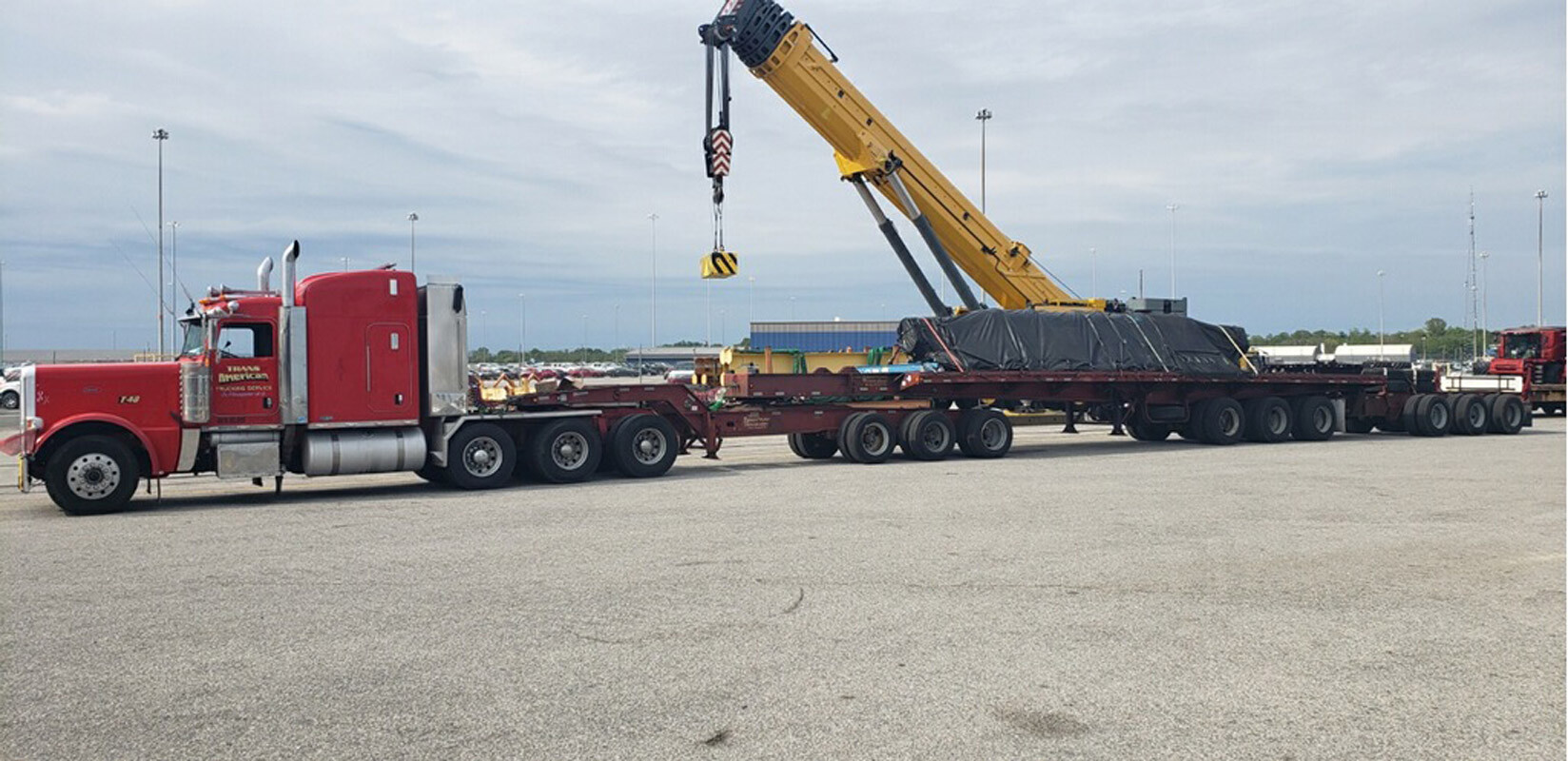
There are a lot of logistics providers in the US and even more so on the East Coast. What makes you stand out?
Our approach is to make the experience of working with Thunderbolt an easy one. We want our clients and overseas partners to feel that it’s not difficult working with us. We have always had a flat organizational structure, so decisions can be made quickly. No red tape, no corporate B.S. We don’t need 6 signatures to get approval to do something. If it needs to get done, we get it done. We are a relationship-driven company. Personal relationships mean so much to us which is why I have traveled overseas a lot since we started the company.
We only have one office, but we have a national footprint due to our infrastructure. We have asset and non-asset based truckers that we work with all over the United States. We have warehouses that we work with in all ports and in most major cities in the interior of the country. We have great relationships with the terminal operators and port officials in most of the East Coast and Gulf Coast ports. We try to be as creative as possible in finding solutions for our customers and overseas partners.
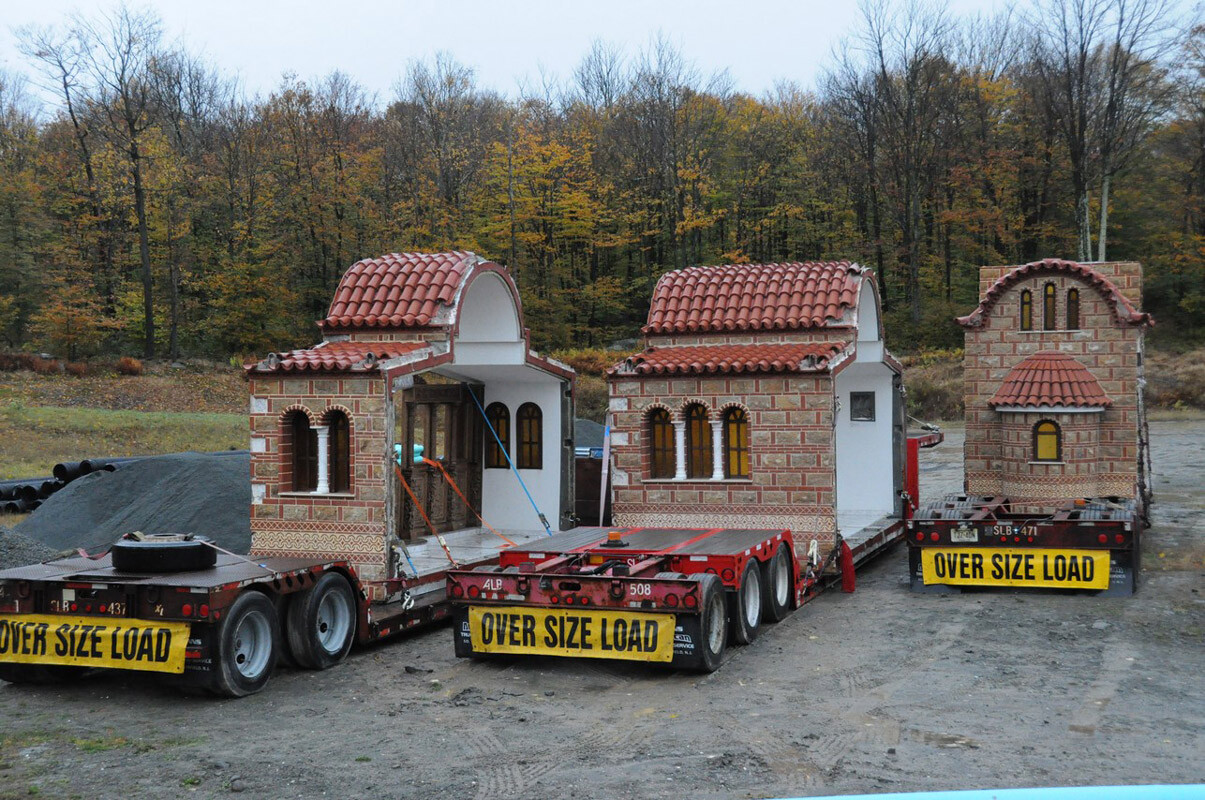
You have experience in handling oversized cargoes for many years. Could you provide our readers with a few examples?
Luckily for us, we have handled oversized cargo in nearly every main port in the United States. The Port of Baltimore is our home base, and that’s where we handle the most oversize cargo. We handled a 105 ton cooling drum for a gypsum plant in Baltimore that was located near The Port of Baltimore. The dimensions were 11.41 x 5.11 x 5.03 meters. We came up with a solution with our trucker by talking to the officials at the Port of Baltimore and utilizing a back gate that was only 300 meters from the delivery point. Instead of having to go through a local residential neighborhood and have to raise traffic lights and utility wires, we ended up having no impediments to deliver the unit. The cooperation we received from the officials and engineers at the Port of Baltimore was critical to a successful delivery. Our trucker did a great job working out all the details. The team at the port that loaded our truck did their usual great job.
We have delivered several industrial presses from the ports of Norfolk, Charleston and Savannah to various locations in South Carolina and Tennessee. One the components from Norfolk to South Carolina was 113 tons with dims [dimensions] of 8.20 x 3.95 x 3.96 meters. Again, we had excellent cooperation from the local staff at the Port of Norfolk. Our trucker had to push hard to get the permits needed to deliver on time right after our Thanksgiving holiday.
We have arranged many exports of mining machinery from Baltimore to Liverpool using ACL’s mafi service. One shipment consisted of 4 crates that we shipped from Baltimore to Hamburg and then arranged delivery to Poland using our partner in Poland. One of the crates was 43,693 kgs/dims: 841 x 236 x 262 cm.
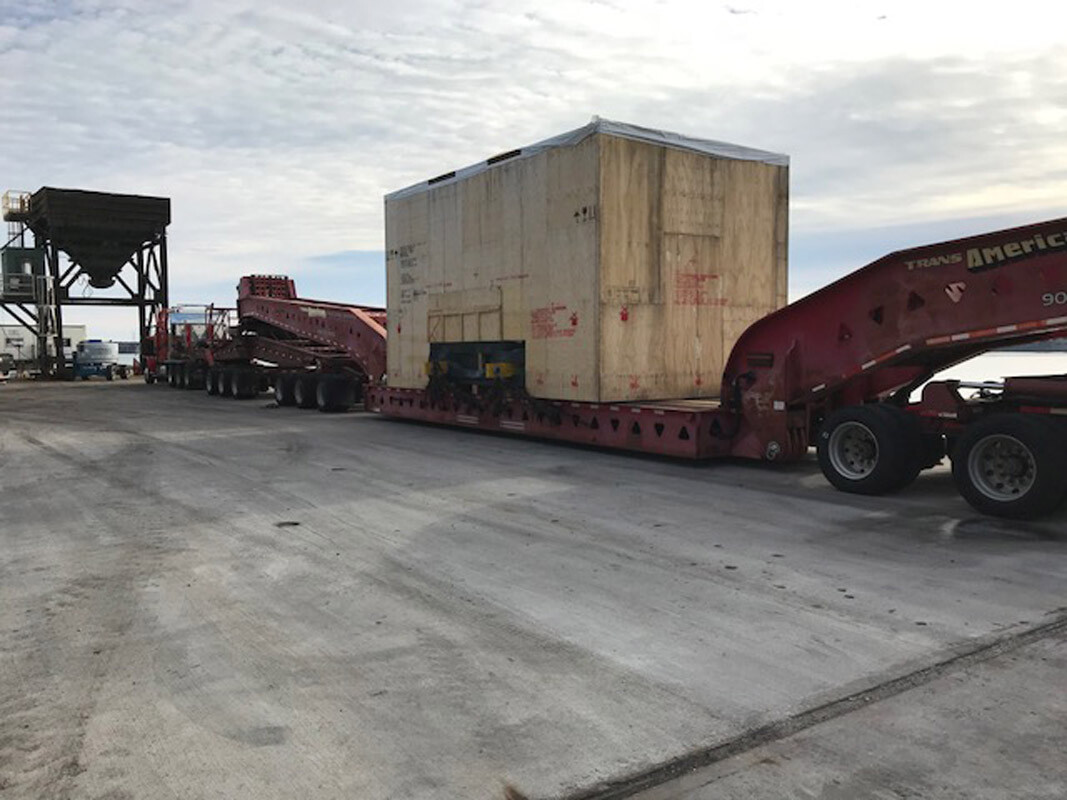
Inland transport in the US can be costly. This is a common statement that I hear from many. What kind of guidance would you give overseas customers if/when they have a delivery to make to inland US?
It’s a very fluid situation in the United States. Trucking capacity can change on a week to week basis. Some parts of the country can be overheating, and you can’t find trucks while other parts of the country are having excess capacity. This is especially true with containerized cargo. In some markets now, we need 2-3 weeks to find a trucker that may have availability.
The pandemic has really taken a toll on heavy haul truckers that rely only on oversize cargo. There is more supply than demand and right now for multi axle trucks. On the flip side, flatbed and step deck carriers have seen rate increases of up to 30% or more in some markets and capacity is tight. Houston is quite hot at the moment.
Ports are competing with each other for cargo. It’s important to take all the factors into consideration when routing cargo to/from a particular location. It’s not always about the shortest distance from origin or to destination when determining which port to use. You have to look at all factors in determining how to route your cargo.
Ease of obtaining permits for oversize cargo is an important factor too. Some states are slower than others to issue permits. Some states require bridge engineering studies over a certain weight and that can add a lot of cost to a project move. 50 states and 50 different rules for permits. Make sure you allow plenty of time for permit approval.
I don’t believe in using an ocean carrier to pick up or deliver our cargo. We want to control the movement of the freight to provide the greatest possible flexibility. Sometimes on paper, it can look less costly to have the carrier deliver or pick up a shipment, however the service aspect is missing. My recommendation is to beware of ocean carriers taking on the domestic portion of a shipment. It’s not their core business. Merchant haulage is the way to go.
Has the COVID-19 crisis affected your business or are you doing “business as usual “?
March 23, 2020 was the day we closed the office, and we actually only just reopened it on October 5th with reduced staff in the office on a weekly basis. Our team adapted quickly to working from home, and we didn’t have any problems other than some occasional technological challenges. We had weekly video department meetings using Go to Meeting, so we could see each other and we would have company-wide video calls too. Seeing each other during this 6 ½ month period was very important. We are not a large company (16 people), so it was easy to keep in touch with each other. I’m so proud of our team as they really kept it together while working from home.
The most important thing for me was keeping our team safe and healthy. We made sure we were 100% ready when we decided to come back to our office. We take COVID-19 very seriously. We had partitions installed at every desk. We bought cases of wipes and sanitizer to have in the office. We have a lot of new protocols to follow. We have some staff who are staying home and working remotely full time. Others come in 1 week in the office and the next week at home. Some come in 1 day a week. I wanted to be as flexible as possible to meet the needs of our staff.
COVID-19 didn’t really impact us until May revenue-wise. The first 4 months of the year were going great, and then the decline began as the virus took hold in Europe, and countries began to shut down. We saw our shipments begin to decrease. Our number one export account dropped 50% in a matter of weeks as they could not source material for export. It was a tough period from May – August. September saw a nice rebound from a lousy August, and we hope that the momentum continues during the 4th quarter. We didn’t lay off or furlough anyone.
It won’t be business as usual for a long time. We don’t allow visitors to the office, and we really aren’t visiting any customers. Travel is completely stopped. That’s been hard for us as we have always had an open door policy for visitors, and now we don’t let anyone in the door.
What markets around the world do you normally deal with, and do you mainly handle imports into the US?
We handle more imports than exports. It’s about 60%/40% import to export and it’s more ocean than air. It’s the nature of the U.S. economy, though export is really my passion. We are a customs broker with a national permit, so we can handle customs clearance anywhere in the United States. On the export side, we are an NVOCC, so we have contracts with many of the main ocean carriers.
We handle a lot of cargo from Europe. We take care of a lot of DAP/DDP shipments for agents all over Europe. We handle imports from Asia, but it’s not as active as Europe. Our exports are mostly to Asia and Europe and the Middle East. A lot of our shipments to the Middle East are nominated by our partners there.
I really want to grow our North/South business with Central and South America. Our shipments to/from Africa are also an area we would like to improve. The same for the Oceania region. We have great partners in Australia and New Zealand. We just have to find the cargo going or coming from there.
Baltimore is one of many ports on the East Coast of the US. How would you rank the ports on the eastern seaboard in terms or their suitability for project cargo?
The main east coast ports from north to south are Boston, New York, Philadelphia, Baltimore, Norfolk, Charleston, Savannah, Jacksonville and Port Everglades/Miami. There are smaller ports like New Haven, CT; Camden, NJ; Wilmington Delaware; Wilmington, North Carolina; and Brunswick, GA that handle breakbulk vessels and container carriers, too.
As manufacturing has moved south in the United States, Norfolk, Charleston, Savannah and Jacksonville have really stepped up their ability to handle project cargo. They all can handle it and do a great job. They have dedicated people that help us when we need it. Ports like Wilmington, Delaware and Wilmington, North Carolina have captured project cargo business by focusing on specific commodities. All ports want a piece of the pie, because it can be a great source of revenue for the port and local economy. I would say Boston is the only port that I have listed that really isn’t a gateway for project cargo.
Baltimore is the number one RO/RO port in the country, let alone the East Coast. With RO/RO vessels comes the ability to move static cargo on MAFIs. Baltimore has breakbulk carriers that call at the port on a liner basis and inducement basis. Baltimore is also the closest port geographically to the Midwest. Truckers don’t have to drive as many miles from Baltimore to say Cleveland or Chicago, so costs can be lower. I’m partial to Baltimore but look at all ports to see what is the best way to handle the shipment.
How is it best for our readers to get in touch with you, Jim?
My e-mail is jim@thunderboltglobal.com, and you can also reach me through our website https://thunderboltglobal.com/ or Linked In.
https://www.linkedin.com/in/jim-shapiro-6921b389/
Thank you.


